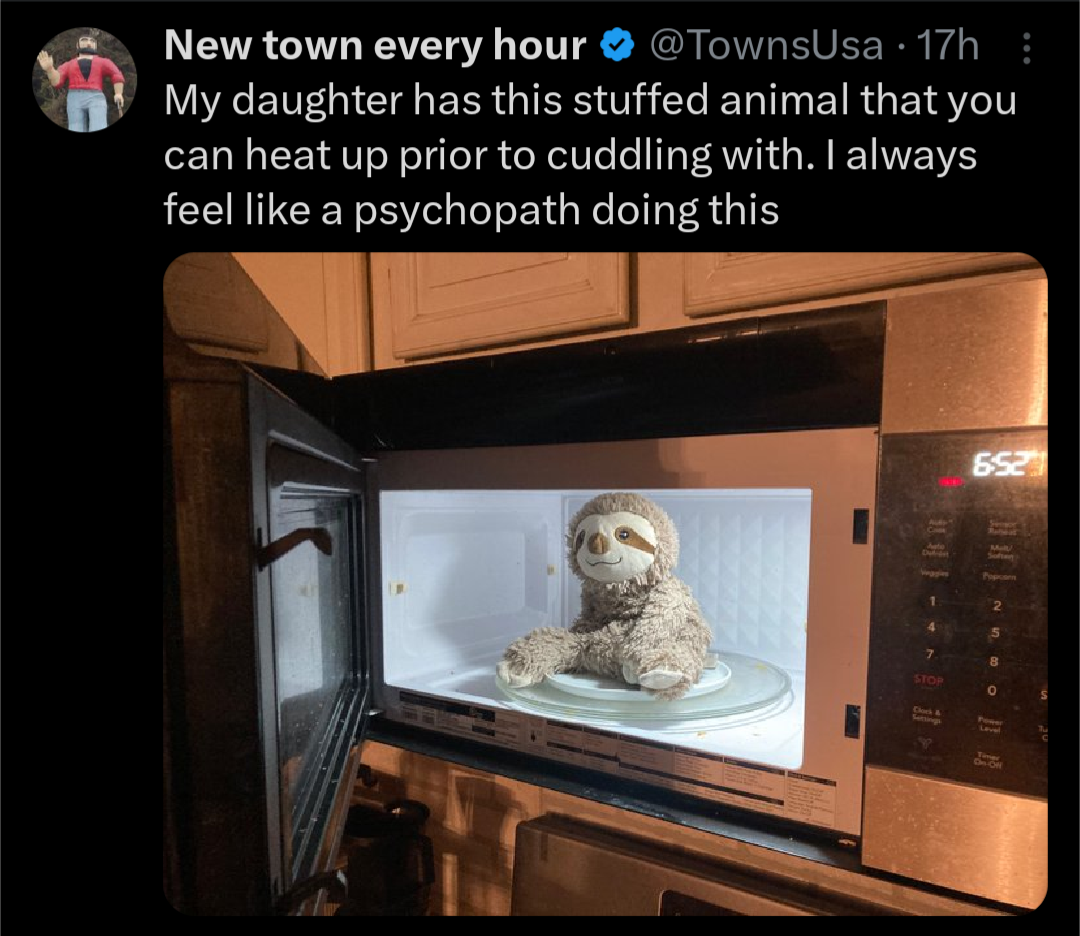this post was submitted on 08 Dec 2024
884 points (99.4% liked)
People Twitter
5454 readers
1958 users here now
People tweeting stuff. We allow tweets from anyone.
RULES:
- Mark NSFW content.
- No doxxing people.
- Must be a pic of the tweet or similar. No direct links to the tweet.
- No bullying or international politcs
- Be excellent to each other.
- Provide an archived link to the tweet (or similar) being shown if it's a major figure or a politician.
founded 2 years ago
MODERATORS
you are viewing a single comment's thread
view the rest of the comments
view the rest of the comments

There are assumptions for sure, as to the materials of the sloth, and how it interacts with the microwave energy. Will the eyes heat? Probably. Will they heat before the rest of the plushy erupts into flames? Not sure, but it'a testable, just not in my microwave.
There are many sections of the electromagnetic spectrum, but we are dealing with microwave energy in a microwave. Communication signals bouncing off the ionosphere and RF generated by car ignitions doesn't seem relevent to the discussion.
The RF, as electromagnetic energy, will induce current in metal objects that cut across the path of propagation. Yes, size, shape, material are important, which is why the plushie doesn't immediately catch fire.
If you allow microwave frequencies to cut across a human body with sufficient output power, you will heat that body and cook them with similar effects as food in a microwave.
If the instructions say to microwave the thing whole, then it was presumably tested in the manufacturer's microwave, though
I'm sure they did test it, I'm sure they did burn a few. But I don't want to see how long you'd have to nuke the thing in order to have it burst into flames or melt the eyes in my microwave. I'm gunna heat up some soup later. However, if you would like to stress test the plushie, I'd read your notes later.